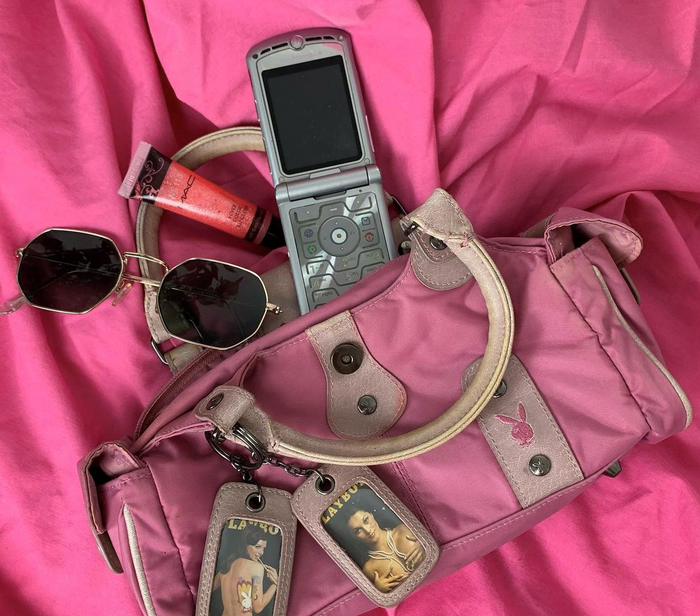Has influencer marketing warped the fashion industry forever?
Fashion Columnist, Amy Reid, reflects on the challenges of reconciling a love of fashion and climate anxiety in the age of the social media influencer

The power of social media influencers is undeniable. I’d like to think of myself as someone who knows their style and doesn’t fall victim to the latest influencer obsession. So why did I spend 90% of my Christmas holiday resisting the primal urge to buy five Peachy Den jumpsuits? Interesting. The reality is, influencer marketing is the most vicious and effective marketing tool the fashion industry has ever had — and it’s helping to kill the planet.
If we’re being totally utilitarian about it, all fashion that goes beyond pure function is wasteful. While the industry continues to damage the environment, many influencers post glamorous snaps in fast fashion ensembles that seek to distract prospective customers from the horrors of their production. The fast pace of influencer-led marketing encourages micro-trends and allows brands to reach consumers at all times of the day, wherever they are. But it’s not just fast fashion that poses a threat — overconsumption of any fashion product contributes to the issue.
“It’s advertising that doesn’t feel like advertising, instead, feeling like a recommendation from a friend”
Despite what the beginning of this article might suggest, I love so much of what the internet has done for making fashion more accessible. It has allowed anyone and everyone to share their looks, thoughts and criticisms, and has facilitated important scrutiny of many of the fashion industry’s questionable practises — including its environmental impact. This said, the relocation of power in the fashion industry away from haughty executives and into the hands of some quirky teens with clear skin and/or famous dads has, surprisingly, brought along a completely new set of downsides ripe for exploitation.
The age of influencer marketing has created an environment in which it’s almost impossible to be satisfied with your wardrobe — or the way you look, or the way your weekends usually play out. Instagram and TikTok supply a daily onslaught of style inspiration from aggressively good-looking people, leaving some of their following inspired by their inventive fashion efforts, and most of their following feeling like a pig in a wig, softly crying. While you’re feeling sufficiently inadequate, the Instagram explore page offers you some hope in the form of a direct link to the I.AM.GIA website. A very temporary medicine.
“There’s the fast-fashion PLT it-girls, the edgy, vintage, ‘could be from a charity shop, could be from SHEIN’ it-girls, and the sustainability it-girls”
It’s painfully good. This personality-led marketing capitalises off the trust which exists between a person and their online following. It’s advertising that doesn’t feel like advertising, instead, feeling like a recommendation from a friend. Traditional celebrities have a tangible skill of some kind, like acting or singing, which creates a clear gap between us and them. Influencers, on the other hand, have no such identifiable difference, leading the average person to feel like their lifestyle is just within reach. An influencer’s online image and persona is half-reality and half-performance, and it’s often impossible to distinguish between the two. By cunningly blurring the barrier between the real and the fabricated, fashion and lifestyle influencers are the perfect fashion marketing tool.
The concept of the ‘it-girl’ who has it all is nothing new; she’s just never been shoved down our throats at such speed and force before. She’s been powered up and comes in multiple different looks now. There’s the fast-fashion PLT it-girls, the edgy, vintage, ‘could be from a charity shop, could be from SHEIN’ it-girls, and the sustainability it-girls. But can any of these new variations change our habits for the better? Even if an influencer promotes vintage and sustainable pieces, the curated image of an endless wardrobe full of perfect ensembles leads their following to keep shopping to keep up, resulting in mass over-consumption, which hurts the environment no matter how sustainably a particular piece is made.
This leaves us wondering if a fashion influencer can ever be a true friend of sustainability. The short answer being, not really. Their very status relies on their ability to encourage their followers to make purchases. The most sustainable thing we can do is to practice being satisfied with what we have and buy less, but in an environment like today, it’s becoming harder and harder to know what a normal person’s relationship with clothing and appearance is supposed to be. A new fashion normal has been expertly crafted by the media we consume and it’s nearly impossible to look back. The sooner we realise that social media’s primary function is to sell us things, regardless of how it’s packaged, the better.
 News / Local business in trademark battle with Uni over use of ‘Cambridge’17 January 2026
News / Local business in trademark battle with Uni over use of ‘Cambridge’17 January 2026 News / Cambridge bus strikes continue into new year16 January 2026
News / Cambridge bus strikes continue into new year16 January 2026 News / News in Brief: cosmic connections, celebrity chefs, and ice-cold competition18 January 2026
News / News in Brief: cosmic connections, celebrity chefs, and ice-cold competition18 January 2026 Comment / Fine, you’re more stressed than I am – you win?18 January 2026
Comment / Fine, you’re more stressed than I am – you win?18 January 2026 Film & TV / Anticipating Christopher Nolan’s The Odyssey17 January 2026
Film & TV / Anticipating Christopher Nolan’s The Odyssey17 January 2026










